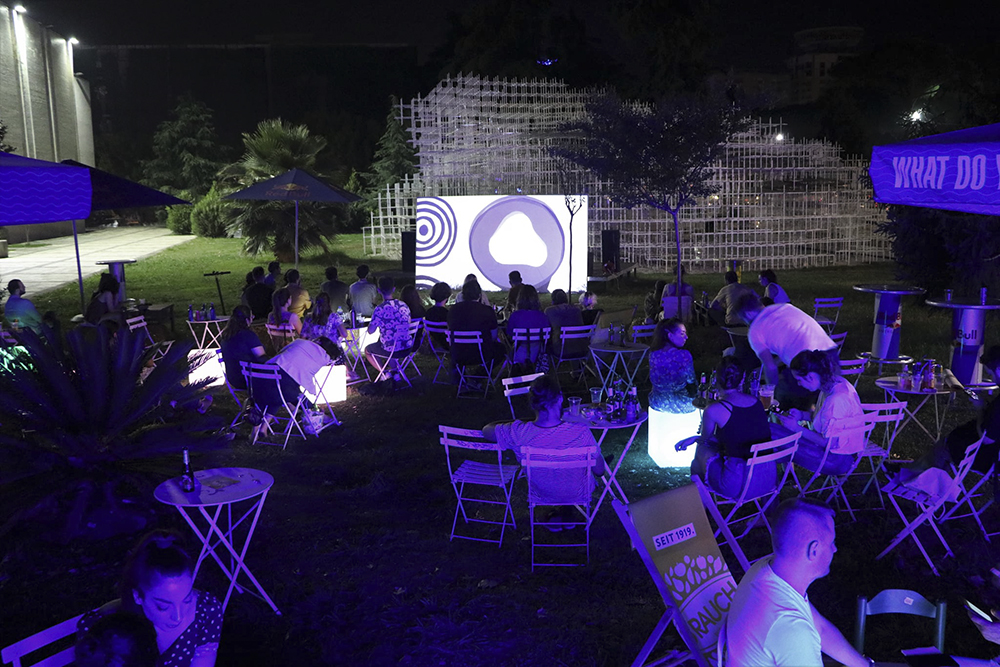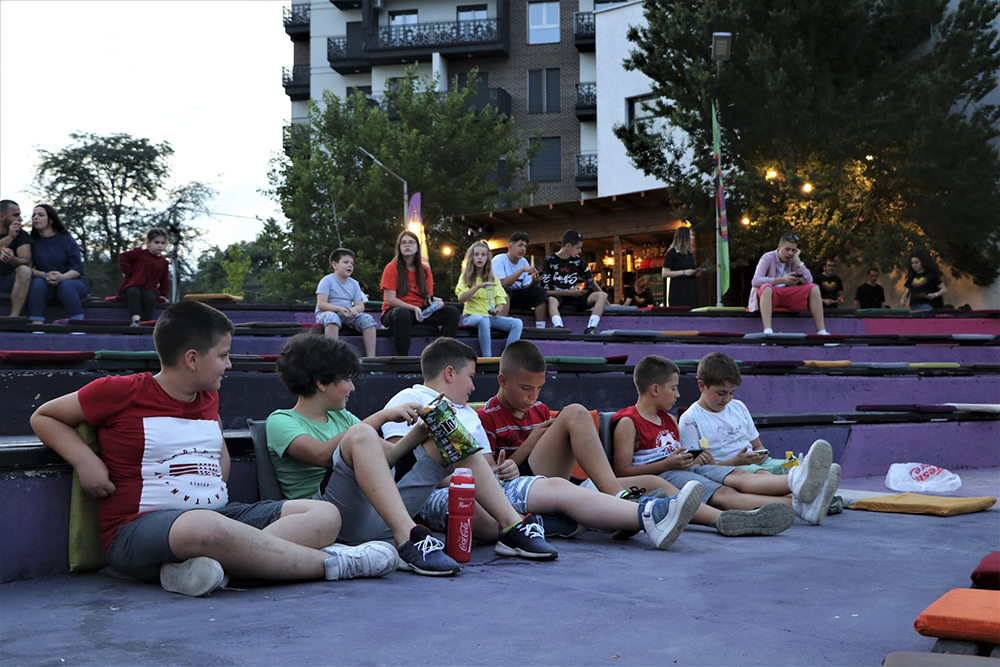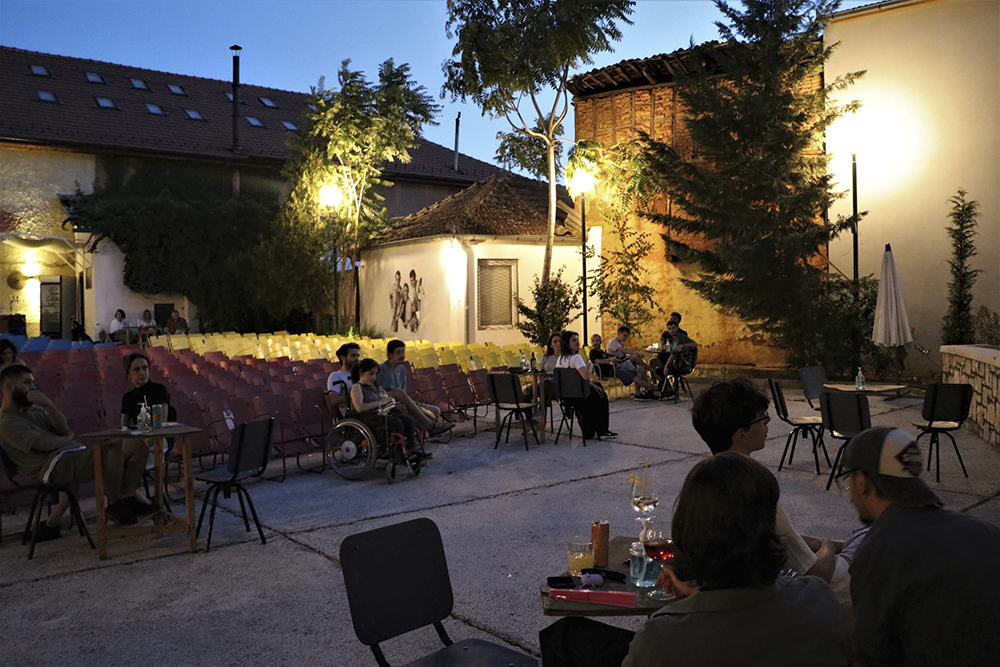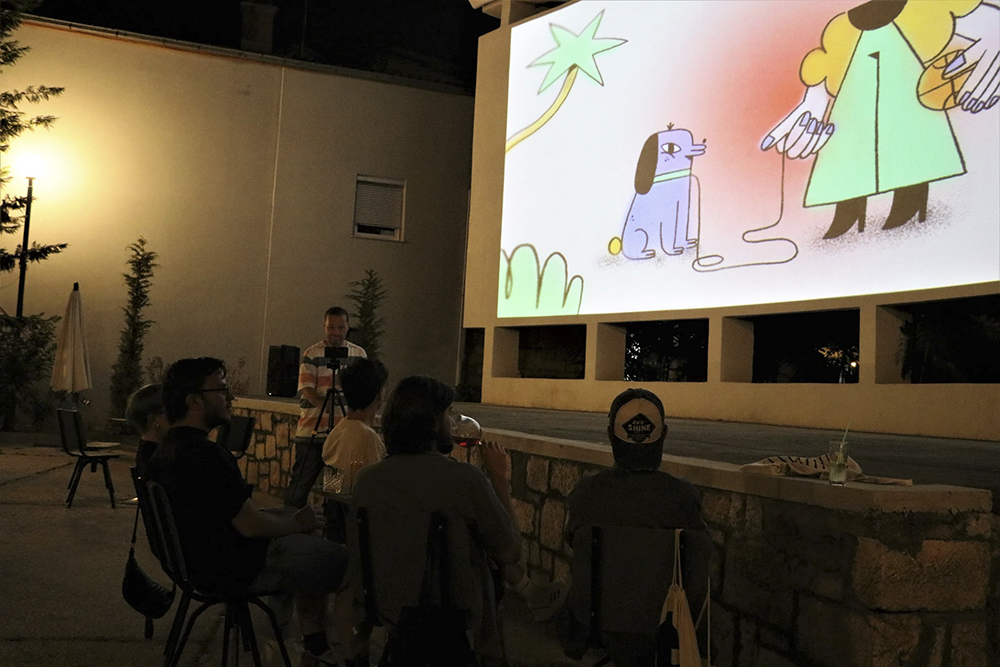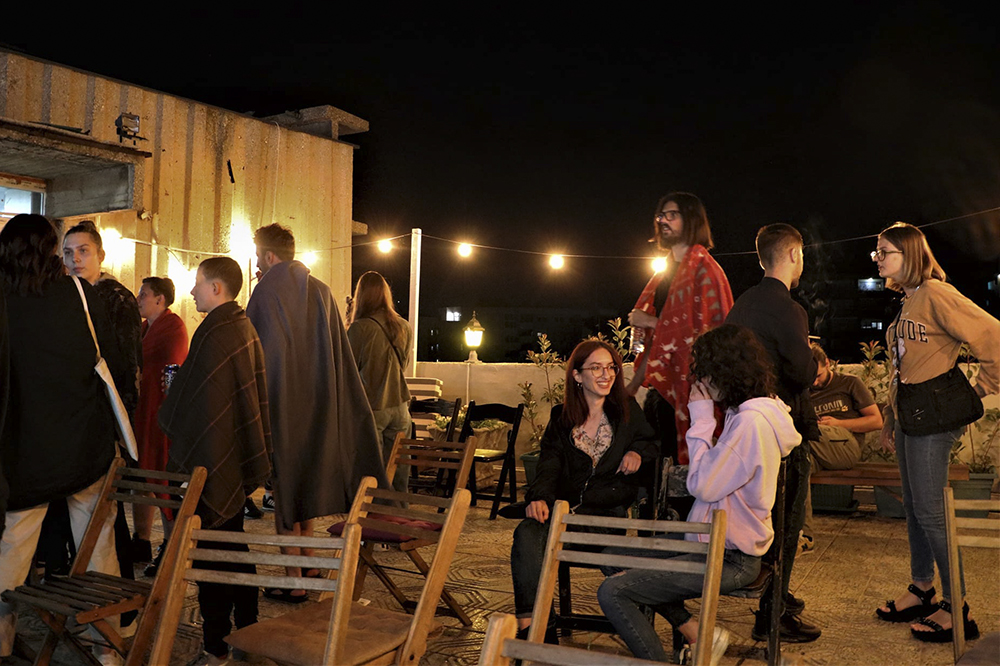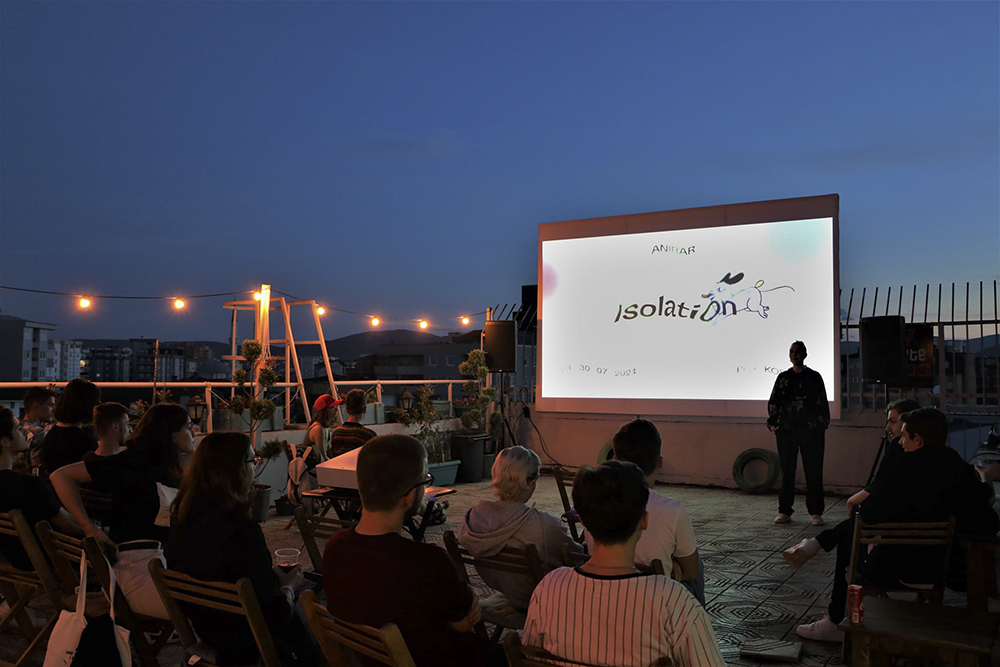The first edition of the Anibar International Animation Festival began 12 years ago in Peja. Each year, thousands of films and well-known figures from the local and global field of animation have been part of the festival, where workshops and master-classes are organized to exchange knowledge and techniques about animation. The festival recently established an animation academy where the fourth generation of students has just graduated.
Vullnet Sanaja — a social activist and now the executive director of Anibar — co-founded the festival when he was only 18 years old. Sanaja leads art activists and encourages them to express their ideas through animation, focusing on important social issues relevant to Kosovo youth. Sanaja considers animation to be a medium that doesn’t prevent artists from conveying their feelings across forms, techniques or expressions, adding that the animated films screened at Anibar convey the feelings of the artists themselves.
Faced with the lockdown measures against the COVID-19 pandemic, last year’s festival was organized virtually through Zoom. The festival discussed the theme “Humans,” and more than 300 animated films could be watched through the virtual platform. Workshops and concerts were also organized virtually.
As in each previous year, this year’s festival addresses a social theme that affects all people — isolation. Inspired by the experience of isolation during the pandemic, Anibar goes beyond that, reflecting on the isolation before and after the pandemic, such as Kosovars’ isolation due to the visa regime and people’s isolation amid the rise of xenophobia, homophobia and other challenges.
“Last year, we took on the role of giving people hope, even though it was more difficult. This year, it seems important to us to go back to the discussions we had before [the pandemic],” Sanaja says.
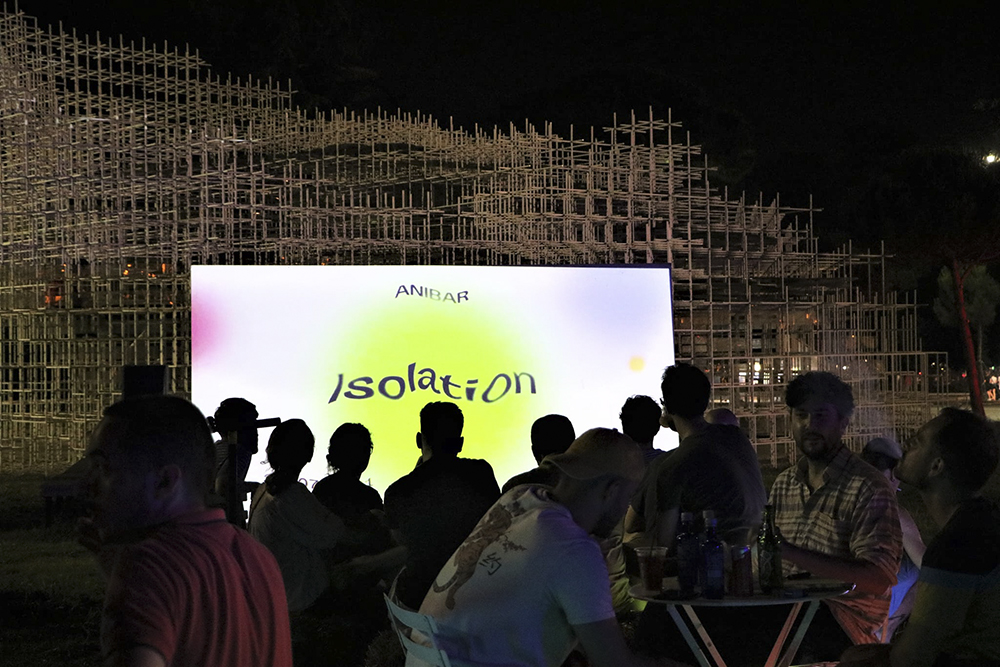
Photo: Courtesy of Anibar.
K2.0 talked to Sanaja about the pandemic, people, isolation and the potential to develop the animation industry in Kosovo. Above all, we talked about the importance of the public’s access to animated productions.
K2.0: It is almost impossible to start the conversation without mentioning the pandemic, especially when talking about cultural organizations. Last year, Anibar was organized after the total lockdown, but the restrictions still continued. This year, there is a significant lift of restrictive measures. Could we talk about the differences and intersections between the previous edition and this year’s edition?
Vullnet Sanaja: The previous edition was as if we were starting the festival from the beginning. We had to reimagine how to be near the community by using digital forms. It was an interesting experience considering the pandemic situation; last year felt as if it was year zero of the festival. It was necessary to train some of the staff on logistics and technical aspects in order to screen the films online. It is also worth mentioning that we prepared packages for workshop participants and mailed them to their houses, and then we held the workshops through Zoom. We also recorded the concerts and broadcasted them on televisions, or since the cafés were allowed to work, we screened one of the concerts in a café.
We had to be creative to face the pandemic situation. The fact that last year’s theme was “Humans” also played a role. We were in a situation thinking, “should we organize the festival, or not?” What motivated us [to go on with the festival] was the fact that health workers, cleaning workers and other people continued to work, and we felt that we had to continue working as well and stay close to animators, artists and the general public.
After last year’s “year zero,” what can we expect from this year’s edition of Anibar?
We continuously discussed and mentioned how in the situation when all the world was isolated, people understood how it feels to be a Kosovar.
COVID-19 measures are eased and this is a new situation for us. The theme of this edition is isolation. We began from the idea that we need to reimagine people’s situation. We continuously discussed and mentioned how in the situation when all the world was isolated, people understood how it feels to be a Kosovar — you know the visa regime and all the difficulties we have in traveling. In a way, the world came into solidarity with Kosovars [laughs]. Beyond the idea of travel, we thought of the isolation of mind. This period brought to surface many issues: isolation within communities or even conflicting relations between different communities — this is one of the aspects that we will treat during this edition.
Regarding the technical aspect, we will use the online platform also this year, where people can watch all the films for a fee of one euro per film. Some of them are free of charge. However, people can watch the films also in cinemas and spaces where the number of the spectators will be limited, and people will wear face masks and respect social distance. The good thing is that films will be screened in open spaces and this makes our work easier and does not pose serious problems. We will abide by all the rules in force against Covid-19.
It seems interesting to me that last year, even though we were facing tough restrictive measures against the virus, the theme of the festival was “Humans,” to give hope, in a way, to the people. This year, you have “Isolation” as a theme, although the measures have been eased and there is hope for overcoming the pandemic situation, that means hope for ending the isolation. Why?
We can say that the measures against the pandemic eased, but the isolation remains, in the first place for us as Kosovars. People continue to be isolated in different aspects that we want to discuss in this edition of Anibar: the idea of the other, how the other is accepted, the rise of xenophobia, or the rise of homophobia, and similar aspects. For us, it is important to discuss these forms of isolation.
Regarding the question about the previous edition and the one this year, I think that this is the reality we are living in. If during the last year we had to take the role of giving people hope, even though it was more difficult, this year it seems more important to us to go back to the discussions we had before the pandemic, to speak about the forms of isolation I just mentioned. Usually, festivals revolve around a theme in order to celebrate it. This year, in the festival, we will celebrate freedom; we have chosen isolation as a theme, but we will celebrate freedom. As a theme, at first, it might make people feel bad, but it might also make people appreciate the freedom that we so often take for granted. We need to scrutinize, deconstruct and see it in relation to ourselves.
Starting from this, how can animated films help us discuss aspects of openness and isolation, freedom and deconstruction?
Animation is a very expressive medium. What amination shows, or what one can depict through animation is a very expressive dimension that deals with bold topics. Anibar’s film program manages to transmit the feelings that the animator has. This is what has motivated me to work in animation: the ease with which you can transmit what you feel, perhaps even more than in a film. Animation does not limit you in form, expression, technique, or performance.
But it is expensive to produce animation, right?
Yes, it is one of the most expensive mediums. However, when someone manages to work in animation, it means they are really into it. And this creates the space to produce the animated film that conforms to the animator’s ideas and approach. In the last years, at Anibar, we have worked to make animation a medium that is accessible to anyone who is interested in it, through workshops that we organize or the screening of animated films.
We have an academic program at Anibar, with around 40 students who continue to work in animation. Last year was the graduation ceremony of the fourth generation of students — who attended a six-month long program. During these 12 years we’ve held animation workshops and in the last four years we have organized the Animation Academy. Our graduates continue to work in animation, and this is very important. Eighty percent of the students have found a job, while 30% of them have continued their animation studies abroad. We have insisted on working with high school students in order to encourage and offer them a space to watch and study animation, also because in Kosovo there is still no study program in this field. It is worth mentioning that the program at Anibar is free of charge. This year, more than ever, we have animated films produced in Kosovo that are participating in Anibar.
Are you saying that there is space for increasing the “local production” of animation?
It’s not that there have been many animated films produced in Kosovo, but this year we have dozens of Kosovar productions participating in our festival. Some years ago, we could not have even discussed animated films from Kosovo. This year, beyond the interest to work in animation, we are seeing that there are films participating in the festival.
In recent years, we’ve seen an increase of film production in Kosovo, mainly supported financially by the Kosovo Cinematography Center (KCC). These productions are presented as, “a good opportunity to present Kosovo to the world,” an approach which might perhaps limit artistic creativity. In these circumstances, what should be the approach of animated films produced in Kosovo?
It is an important period for documentary and live action films in Kosovo, resulting from the work done over the last 20 years. If we invest in the education part and improve access to animated film, both for animators and the public, animated film production in our country could be increased. I agree with the part that film should not be reduced to a kind of “cultural diplomacy.” A film should have an inner purpose — that of the filmmaker to the local public. At the same time, creators should have access to recognition and the international market, not serve merely as representatives of their cultures. We should be oriented towards creativity and production.
Some years ago, we could not have even discussed animated films from Kosovo. This year, beyond the interest to work in animation, we are seeing that there are films participating in the festival.
In recent years, there was a lack of structural state support for local film development. For example, Radio Television of Kosovo (RTK), as a public media, should support local film production, in this case animated film. There should be animated films produced in Kosovo and screened on RTK. Anibar’s story emphasizes the element of creators’ education and professional growth. But after that, the films should be screened in local cinemas, and later there could be international festivals where well-known filmmakers and films get invited. This is how the festivals in other countries began.
This has not happened in Kosovo.
The opposite happened in Kosovo. We started with the Anibar International Film Festival, probably without having any local production [of animated film]. However, it is not that it didn’t function the way we did it. After we started the festival, we continued to fight for cinemas [for their functionalization or for protecting the objects] and for film screening. In recent years, we are working in the education program for filmmaking. I don’t know if it is good or bad, but I think it is good that we are now focused on local production. We need to understand that like any other industry, animation should also reach across sectors: in education, in the functionalization of cinemas, and the public broadcaster and other state mechanisms should be involved in the production of animated films. And we should not forget that the KCC should provide structural support.
Do you know how much support the KCC provides for the production of animated films?
I don’t know what the KCC’s support is in percentage. However, it is important to note that recently there have been more initiatives to support and intensify the work regarding animation. It seems that like in some other fields, in animation too, we have the potential as a society to produce good content. As a state, sometimes we pay double the price [for screening animated films in Kosovo]. I’ll mention again the public broadcaster — it would cost RTK less to invest in producing local animation, than to continuously buy animated film products. Considering that animated films are for every age, it is important to invest in this medium. The narratives depicted by this medium are formative in many aspects.
Given this, a question that comes to my mind is how much does it cost to produce an animated film?
Lately, we did an estimation regarding some of the animated film categories. Some animated films are more complex and cost more whereas some others cost less. Depending on this, to produce one minute of an animated film costs between 1,500 and 3,000 euros.
One of the aspects you are continuously mentioning is the screening and the access of Kosovar public to animated films produced in Kosovo. Why do you emphasize this, because many times when it comes to artistic creations in Kosovo this aspect gets overlooked?
Anibar could definitely be more accessible, and without a doubt this is our continual goal. This is why we are trying to screen the films in non-conventional spaces. For seven years now, we also have [the program] Anibar on tour, which is held in different cities of the country. Through this program, we go to different locations and screen films there. After the festival, we screen the film program in schools in Peja. The idea is to offer access to films for children. However, we haven’t received any form of support from the Ministry of Education for this initiative.K
Feature image: Atdhe Mulla / K2.0.


This article has been produced with the financial support of the “Balkan Trust for Democracy,” a project of the German Marshall Fund of the United States and the Norwegian Ministry of Foreign Affairs. Opinions expressed in this article do not necessarily represent those of the Norwegian Ministry of Foreign Affairs, the Balkan Trust for Democracy, the German Marshall Fund of the United States, or its partners.
Why do I see this disclaimer?


